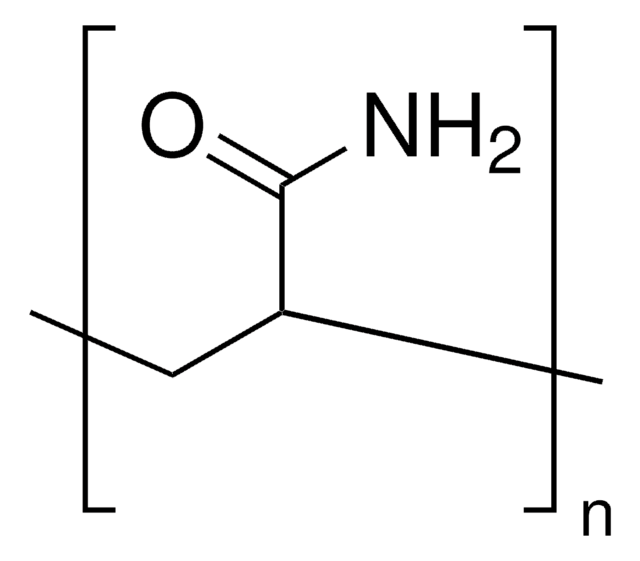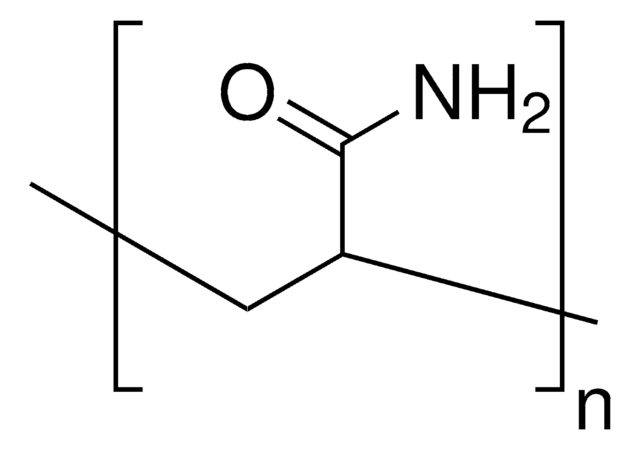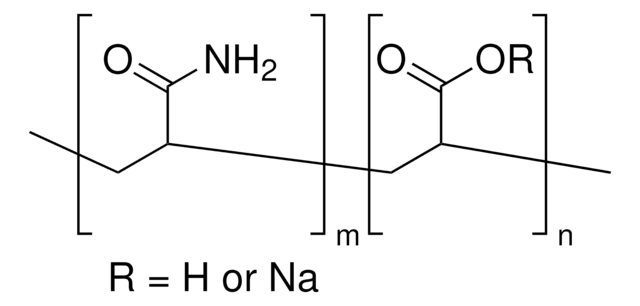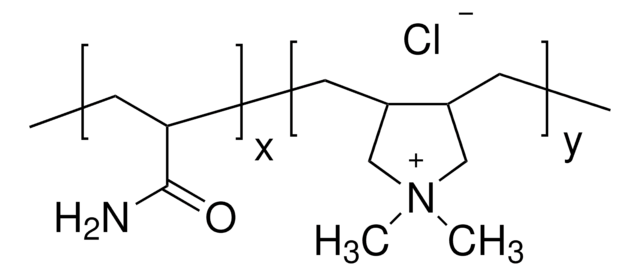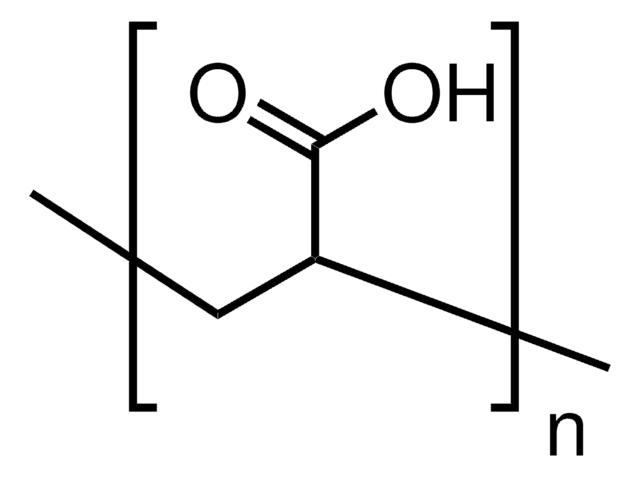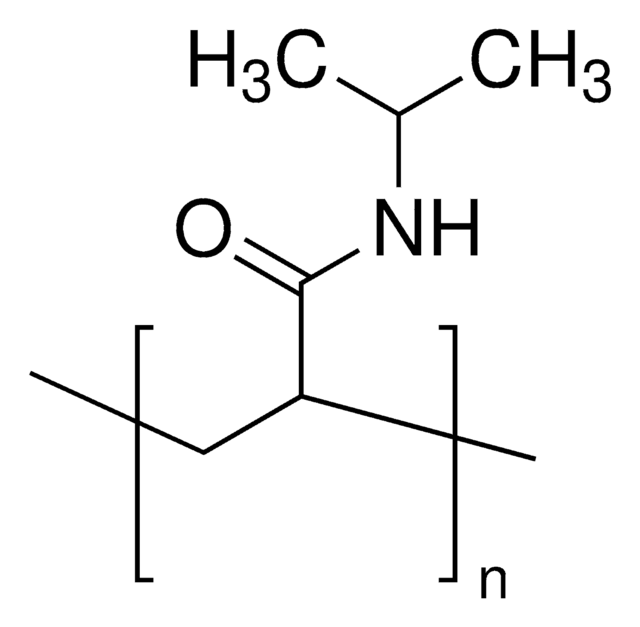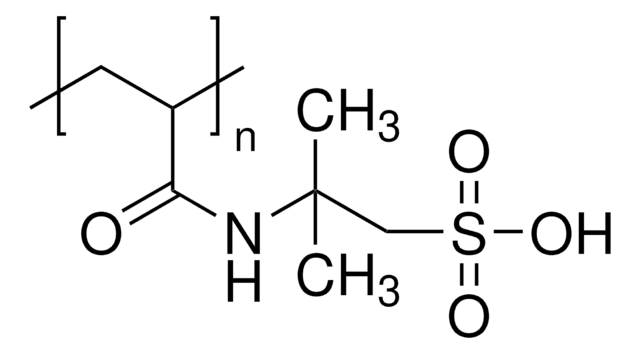Wichtige Dokumente
749222
Polyacrylamid
average Mn 150,000
Synonym(e):
PAM
About This Item
Empfohlene Produkte
Form
solid
Qualitätsniveau
Mol-Gew.
average Mn 150,000
mp (Schmelzpunkt)
>200 °C
SMILES String
NC(=O)C=C
InChI
1S/C3H5NO/c1-2-3(4)5/h2H,1H2,(H2,4,5)
InChIKey
HRPVXLWXLXDGHG-UHFFFAOYSA-N
Suchen Sie nach ähnlichen Produkten? Aufrufen Leitfaden zum Produktvergleich
Verwandte Kategorien
Anwendung
- The influence of swelling on elastic properties of polyacrylamide hydrogels: Studies how swelling influences the mechanical properties of polyacrylamide hydrogels, relevant for biomaterials research and development (R Subramani et al., 2020).
- Basics and recent advances of two dimensional-polyacrylamide gel electrophoresis: Reviews advancements in gel-based proteomics using polyacrylamide gel electrophoresis, essential for protein separation techniques in biochemical research (S Magdeldin et al., 2014).
- Polyacrylamide gel electrophoresis: Provides comprehensive guidelines on using polyacrylamide gel electrophoresis for molecular biology applications, including its role in genotyping and molecular diagnostics (MR Green, J Sambrook, 2020).
Lagerklassenschlüssel
11 - Combustible Solids
WGK
WGK 2
Flammpunkt (°F)
Not applicable
Flammpunkt (°C)
Not applicable
Hier finden Sie alle aktuellen Versionen:
Besitzen Sie dieses Produkt bereits?
In der Dokumentenbibliothek finden Sie die Dokumentation zu den Produkten, die Sie kürzlich erworben haben.
Kunden haben sich ebenfalls angesehen
Artikel
Collagen molecules play a critical role in tissue architecture and strength, and in cell-matrix interactions as insoluble ligands to regulate the diverse phenotypic activities of cells.
Highlighting existing and novel fabrication methods for both, solid and hydrogel-based scaffold for tissue engineering applications.
Global Trade Item Number
| SKU | GTIN |
|---|---|
| 749222-5G | 4061832897233 |
| 749222-25G | 4061832897226 |
Unser Team von Wissenschaftlern verfügt über Erfahrung in allen Forschungsbereichen einschließlich Life Science, Materialwissenschaften, chemischer Synthese, Chromatographie, Analytik und vielen mehr..
Setzen Sie sich mit dem technischen Dienst in Verbindung.